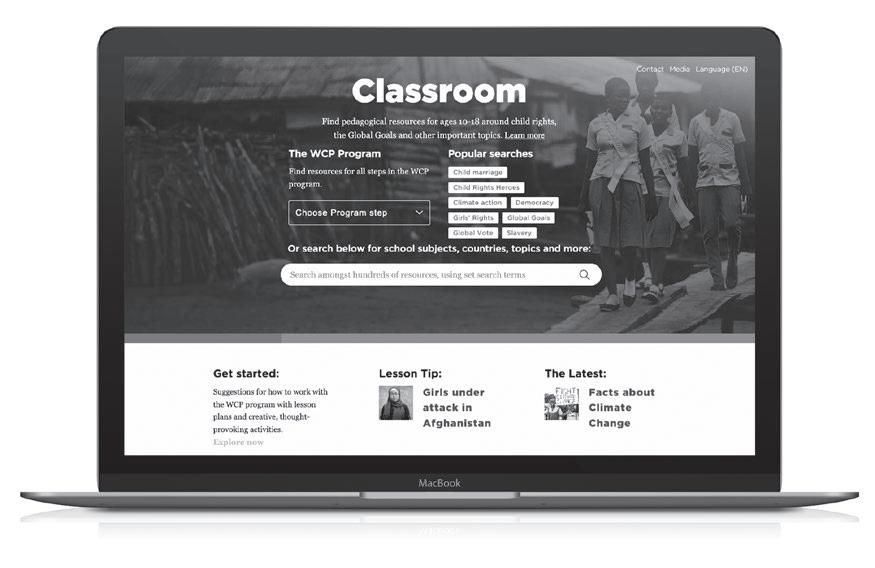
1 minute read
LEARN FOR CHANGE The Rights of the Child where you live
It’s important to know one’s own rights to be able to respect the rights of others. Therefore, begin with exploring whether children’s rights are respected in the students’ own lives; at home, in school and in their free time.
First Encounter With The Rights Of The Child
What is the UN Convention on the Rights of the Child about, and what does it mean for children if a country has pledged to follow it? Ideally, everyone should be able to write down their thoughts, on paper or boards.
1. Individually: Assign the following task: What rights do you think children should have? Tell each student to come up with and note down 5–10 things that should be natural rights for all children everywhere. It can be about:
• Having a safe and comfy home.
• Being listened to.
• Having time to play and rest.
• Going to school.
• Being healthy.
• Having enough food every day.
2. Work in pairs: Students pair up take turns to read the rights they have written down to each other. Together, they consider questions such as: Which of the rights are similar? Was there something your friend came up with that you want on your list?
3. Work together: Go through the short version of the UN Convention in The Globe. Discuss the differences and similarities with the various rights written down by the students. Is there any article that no-one had thought of? Did anyone come up with a right that is not included in the Convention? Which rights do you think are most difficult to fulfil where you live, in your village or town? Write down the suggestions where everyone can see them.
Resources
✲ The UN Convention on the Rights of the Child p. 8–9 in The Globe and on wcp.global/childrights

✲ Factsheet about children’s rights in your country.











